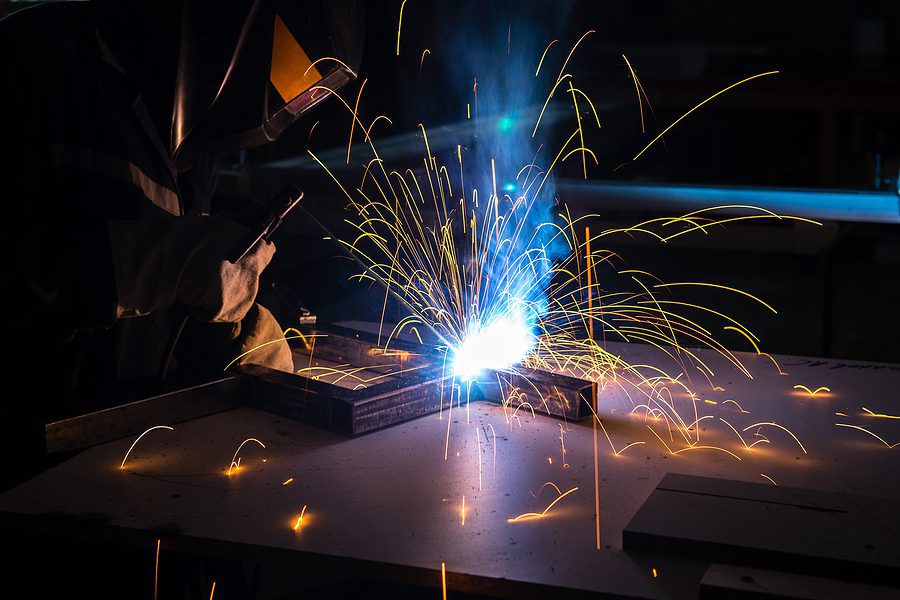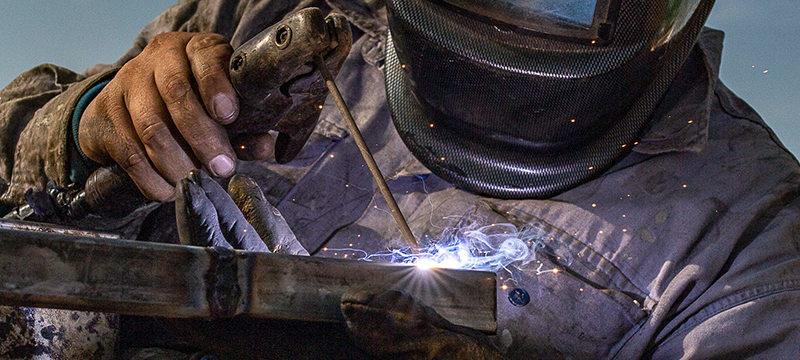Best practices to spot and repair weld flaws in Montana Mobile Welding and Repair Belgrade Welding
Common Welding Repair Service Issues and Exactly How to Address Them Successfully
Welding repair services usually encounter a series of issues that can endanger the integrity of the end product. Typical problems include insufficient infiltration, porosity, and misalignment, to name a few. Each defect provides one-of-a-kind obstacles that need particular techniques for resolution. Understanding these problems is essential for welders aiming to boost their abilities and end results. This conversation will check out these common welding repair concerns and effective approaches to resolve them.
Poor Penetration
Insufficient infiltration happens when the weld metal stops working to completely fuse with the base product, leading to weak joints and potential structural failures. This problem usually stems from not enough warmth input, wrong electrode angle, or inappropriate welding speed. Welders might come across poor infiltration because of a miscalculation of the essential specifications for a certain product thickness or kind. Additionally, contamination on the base product's surface can impede efficient bonding, aggravating the issue. To resolve insufficient infiltration, welders must guarantee ideal settings on their devices and maintain a tidy work surface area. Routine evaluation of welds is suggested to recognize any kind of shortages early, permitting timely corrections and the avoidance of jeopardized architectural integrity in bonded assemblies.
Porosity
Porosity is a typical problem in bonded joints that manifests as small gas bubbles trapped within the weld metal. This flaw can jeopardize the integrity of the weld, resulting in decreased stamina and potential failure under anxiety. Montana Mobile Welding and Repair. Porosity generally occurs from contamination, wetness, or inappropriate welding strategies, which permit gases to leave into the molten weld pool. To attend to porosity, welders need to assure proper surface area prep work, keep a clean working environment, and utilize appropriate welding specifications. Additionally, selecting the ideal filler product and shielding gas can mitigate gas entrapment. Normal examination and screening of welds can assist recognize porosity early, guaranteeing timely restorative actions are taken, consequently preserving the top quality and dependability of the welded framework
Misalignment
Misalignment in welding can arise from different aspects, including improper setup and thermal growth. Comprehending the root creates is crucial for effective resolution. Several correction techniques are available to straighten components and ensure structural stability.
Reasons for Imbalance
Welding imbalance frequently comes from a selection of underlying issues that can endanger architectural stability. One primary cause is incorrect fit-up of parts before welding, which can bring about spaces and unequal surface areas. Variants in thermal growth throughout the welding procedure can likewise lead to distortion, especially if the products being joined have various coefficients of expansion. In addition, insufficient fixturing and clamping may fail to hold elements safely in position, bring about activity during welding. Badly conserved tools, including welding equipments and tools, might introduce variances in the weld grain, further adding to misalignment. Operator error, stemming from not enough training or experience, can additionally play a substantial duty in developing misaligned welds.

Correction Strategies Offered
Attending to imbalance efficiently needs a combination of corrective techniques tailored to the certain concerns available. One typical technique is using components or jigs to hold components in the right position during welding, guaranteeing consistent positioning. Furthermore, preheating the products can help in reducing distortion and boost fit-up. For substantial misalignment, mechanical adjustment methods, such as using hydraulic jacks or clamps, can be employed to correct the position before welding. Post-weld warm therapy might additionally be required to eliminate stresses triggered by misalignment. Careful evaluation and modification throughout the arrangement phase can avoid misalignment problems from becoming significant problems, promoting a smoother welding process and improving overall structural honesty.
Distortion
Distortion is a common difficulty in welding that can occur from various factors, consisting of unequal heating & cooling. Comprehending the root causes of distortion is crucial for implementing reliable prevention techniques. Addressing this issue not only boosts architectural integrity but also enhances the total quality of the weld.
Root causes of Distortion
When subjected to the extreme heat of welding, products commonly undergo changes that can result in distortion. This sensation largely arises from thermal expansion and contraction during the welding procedure. As the weld location heats up, the product increases; upon cooling, it acquires, which can create inner anxieties. Additionally, irregular heating throughout a workpiece can intensify these stresses, resulting in bending or flexing. The type of material likewise plays a significant role; steels with differing thermal conductivity and coefficients of growth may react differently, bring about uncertain distortions. Moreover, inadequate joint layout and insufficient fixturing can add to misalignment throughout welding, increasing the chance of distortion. Understanding these reasons is important for effective welding fixing and prevention techniques.
Avoidance Techniques
Effective prevention methods for distortion during welding focus on check here regulating heat input and making certain proper joint style. Preserving a constant warmth input aids to lessen thermal growth and tightening, which can bring about distortion. Using methods such as pre-heating the work surface can also decrease the temperature level gradient, promoting uniform heating. Furthermore, selecting suitable joint layouts, such as T-joints or lap joints, can enhance stability and decrease stress concentrations. Carrying out correct fixturing to safeguard the workpieces in place further help in maintaining positioning throughout the welding procedure. Lastly, staggered welding series can distribute warmth extra uniformly, preventing local distortion. By applying these strategies, welders can significantly reduce the possibility of distortion and enhance the total high quality of their welds.
Splitting
Breaking is a typical problem encountered in welding repair work, frequently resulting from numerous elements such as incorrect cooling rates, material choice, or insufficient joint prep work. The occurrence of splits can greatly jeopardize the integrity of the weld, bring about prospective failures throughout procedure. To address this concern, welders should initially examine the origin, making certain that materials are compatible and suitably selected for the certain application. Furthermore, controlling the air conditioning rate during go to the website the welding procedure is necessary; fast cooling can generate anxiety and cause splitting. Appropriate joint layout and preparation additionally add to reducing the danger. Applying these strategies can enhance weld high quality and longevity, ultimately decreasing the probability of splitting in ended up weldments.

Incomplete Combination
A considerable problem in welding repair services is insufficient fusion, which takes place when the weld metal does not properly bond with the base material or previous weld passes - Belgrade Fabrication. This issue can lead to weaknesses in the joint, possibly jeopardizing the integrity of the welded structure. Elements adding to incomplete combination consist of not enough warmth input, incorrect welding strategy, and contamination of the surfaces being joined. To resolve this concern properly, welders should assure proper pre-weld cleansing and surface prep work, as well as readjust their welding specifications to attain adequate penetration and blend. Regular evaluation during the welding process can also assist identify incomplete blend early, permitting prompt corrective steps to boost the total high quality of the weld
Overheating
While welding fixings can boost architectural honesty, overheating l offers a substantial obstacle that can lead to material degradation. Too much heat throughout welding can modify the mechanical homes of metals, causing decreased toughness, raised brittleness, and bending. This phenomenon is especially crucial in high-stress applications where structural reliability is critical. Determining overheating can involve aesthetic evaluations for staining or distortion, as well as checking temperature level during the welding procedure. To minimize the threats connected with getting too hot, welders should utilize ideal techniques, such as managing warmth input, changing traveling rate, and utilizing ideal filler products. In addition, implementing pre- and post-weld warm therapies can aid recover product residential properties and enhance the general top quality of the repair service, guaranteeing long-term performance and security.
Regularly Asked Concerns
What Are the Common Indications of a Welding Issue?

Just How Can I Test My Welds for Quality?
To test welds for high quality, one can use visual examinations, ultrasonic screening, and radiographic methods. Each technique assures structural honesty, recognizes flaws, and verifies adherence to defined criteria, ultimately enhancing the reliability of the welded joints.
What Security Precautions Should I Take While Welding?
When welding, one must prioritize safety by wearing appropriate personal protective equipment, guaranteeing proper ventilation, securing combustible products away, preserving a tidy workspace, and recognizing environments to prevent crashes and injuries.
Can I Repair a Weld Without Redoing the Entire Joint?
Fixing a weld without redoing the whole joint is feasible, depending on the damages (Welding). Strategies such as grinding, including filler product, or utilizing a welding procedure can properly attend to specific defects while maintaining the bordering framework
What Tools Are Crucial for Reliable Welding Repairs?
Vital tools for reliable welding repair work consist of a welding device, wire brush, grinder, safety equipment, clamps, and filler materials. Each device plays a vital function in making certain quality and security throughout the fixing process. Porosity usually develops from contamination, dampness, or improper welding techniques, which permit gases to run away right into the liquified weld pool. Improperly kept tools, consisting of welding makers and tools, might present incongruities in the weld bead, additional contributing to misalignment. When subjected to the intense warmth of welding, materials typically undertake modifications that can lead to distortion. Splitting is an usual problem experienced in welding repairs, usually resulting from numerous factors such as incorrect air conditioning rates, material choice, or poor joint prep work. A considerable issue in welding repair services is insufficient fusion, which takes place when the weld steel does not appropriately bond with the base material or previous weld passes.